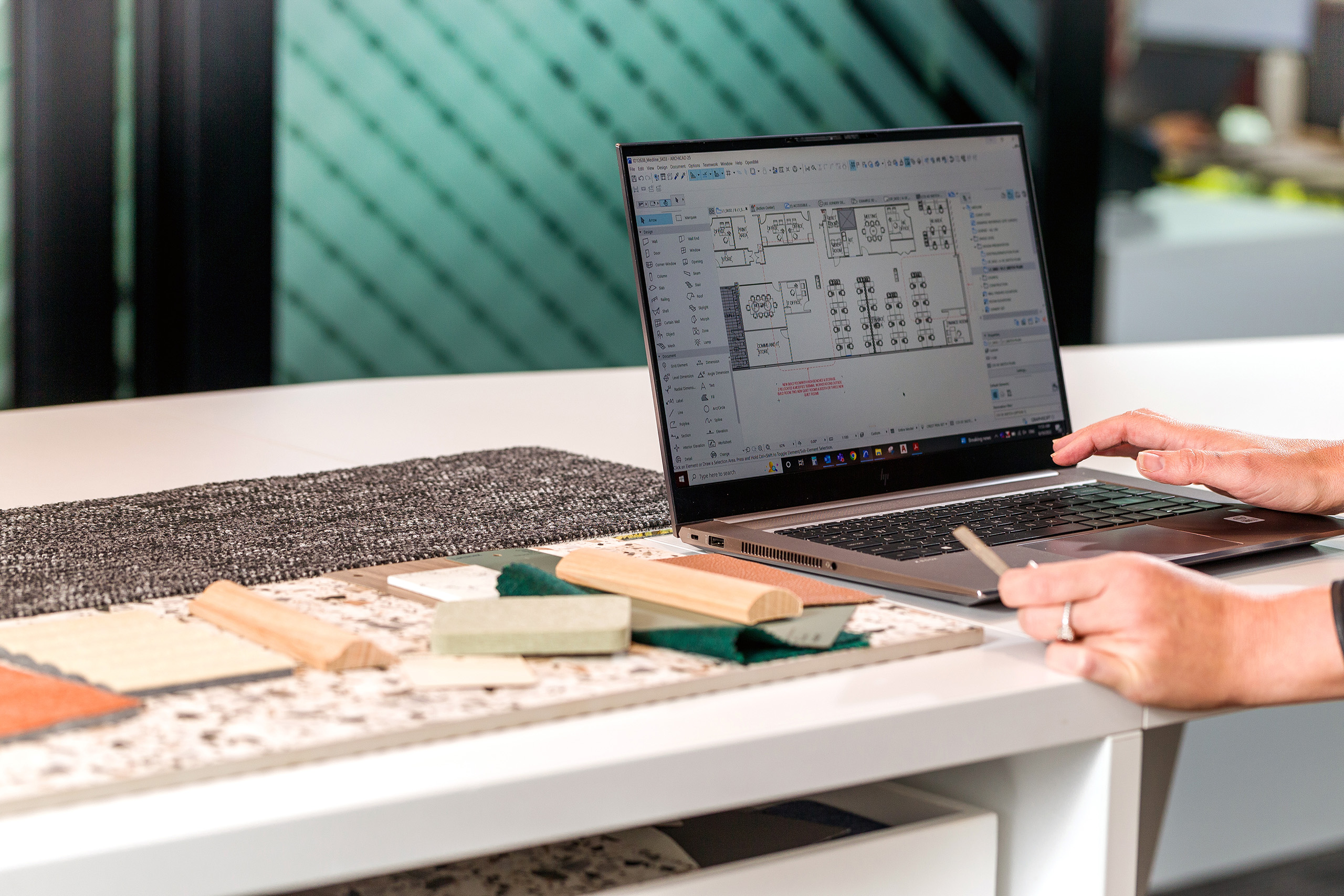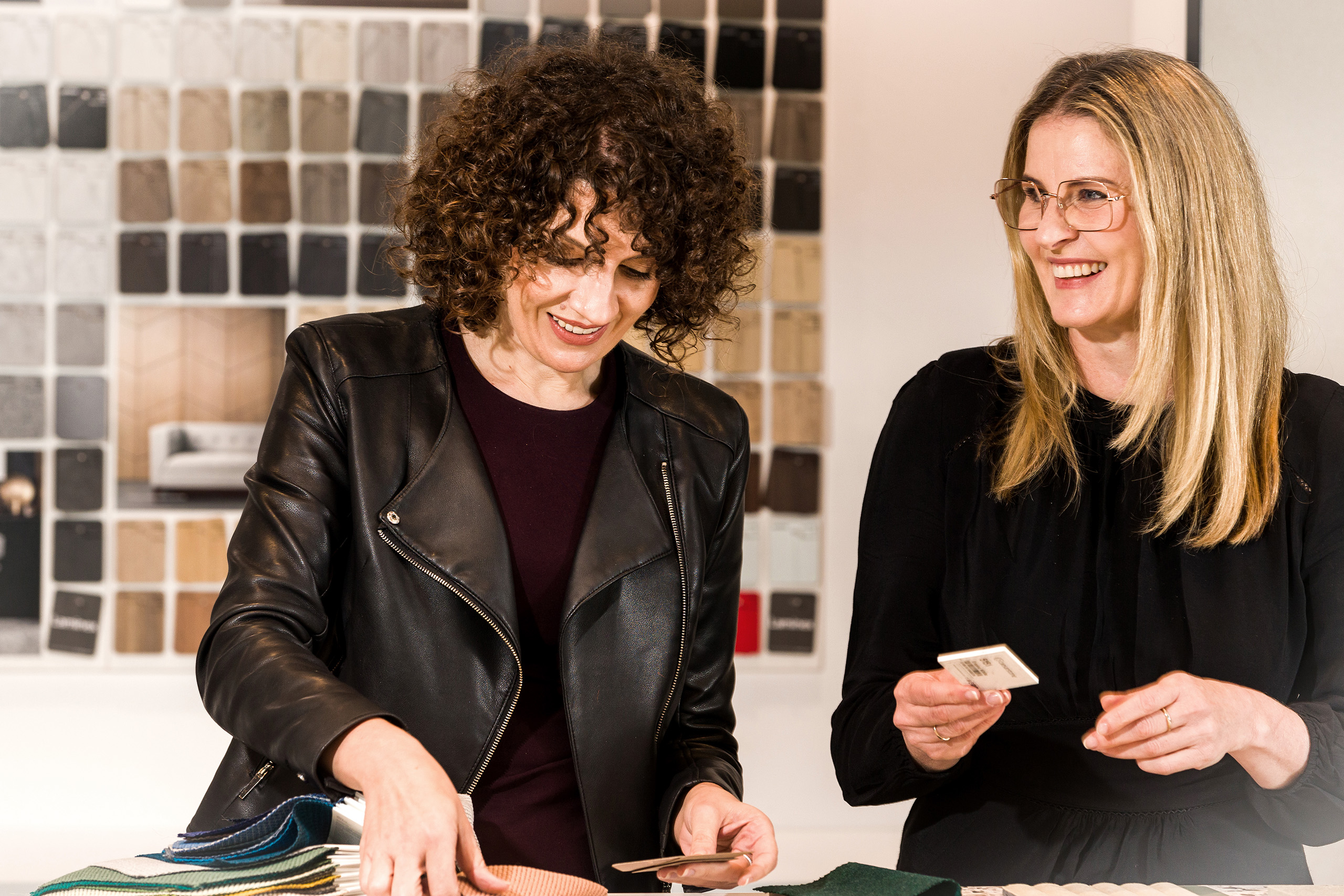The winning combination. How psychology, strategy and smart spaces can help master your hybrid work model.
The world and the way we work have shifted, bringing about a transformation in workplace expectations. Offering perks like free lunch on Fridays just isn't enough to attract employees back to the office and make them want to stay there. In a post-pandemic world, employees have come to appreciate the perks of remote work—things like flexibility, comfort, and boosted productivity. This shift poses a real challenge for employers aiming to increase in-office attendance.
According to Gallup’s 2023 Global Report, only 23% of people in Australia and New Zealand are ‘thriving at work’—they find their work meaningful and take ownership of it. Meanwhile, 78% are ‘quiet quitting’ or ‘loud quitting’—either not engaged or actively disengaged. This shows that 81% of employees think the job market is strong and that now is a good time to look for new employment opportunities.

It might not come as a surprise that work-life balance is ranking high as a priority for Australians seeking employment (62%), according to the 2023 Randstad report. This clearly indicates the changing needs and expectations of the workforce. It's not surprising that flexibility takes precedence over salary and benefits. Additionally, an appealing work environment ranks among the top five priorities for job seekers. Given these considerations, how can employers effectively navigate the complexities of hybrid work and optimise their hybrid work model without adversely affecting their employees and business?
Here at Crest, we believe you can create a truly sustainable hybrid work model – one that works for both employers and employees alike. We sat down with Senior Workplace Strategist and Psychologist Sarah Zerella about the role psychology, strategy, and smart property design can play in helping solve the hybrid work property/people puzzle. Here, we look at some of the challenges organisations are facing in this space – and what steps you can take to address them.
Get to know your people
Sarah tells us that in some organisations, a myth exists amongst senior leaders: “They think their people are working from home because it's less effort than coming into the office. However, there are many legitimate reasons people aren’t ready to come back into the office,” Sarah explains.
Underlying cultural issues, psychological safety concerns, loss of work time when under work/deadline pressure, neurodivergent needs, being geographically displaced, inadequate change management communication, and perceived fairness of the hybrid working model are just some of the reasons why people may refrain from coming to the office. The physical environment's inadequacy for their needs also significantly influences this preference, as the work environment fails to support their performance effectively.
So, how do you effectively manoeuvre through these intricacies and ease the friction between leadership teams and their employees regarding hybrid work? A comprehensive workplace strategy allows you to understand your team members' individual attitudes, requirements, and work habits, aligning them with your organisation's strategic goals. By uncovering this vital information, you can tailor a successful hybrid work model backed by the data of your workforce.

All together now
Culture, or ‘the way we do things around here,’ is a key driver for how your organisation achieves its strategic goals. Sarah tells us that trust is a key ingredient in building high-performing teams and strong relationships.
“When people are physically together, they release oxytocin, a neurotransmitter that promotes social bonding and enhances feelings of connection and trust. When we connect virtually, the release of oxytocin can be limited,” Sarah says.
“Not only that, but 55-93% of our communication is nonverbal. Some nonverbal cues are difficult to read virtually. When people are face-to-face, nonverbal cues like eye contact and body language are more accessible,” she adds.
As an organisational leader, if you want to implement a hybrid work policy that supports your people being face-to-face more often, Sarah suggests “communicating clear guidelines that consider everyone’s needs and work patterns. For example, telling a staff member who requires 90% focus time that they must be in the office four days per week “for collaboration” won’t resonate – or help them be productive.”
The great mandate debate
Around 87% of Australian businesses have mandated that their employees attend the office for a set number of days each week (source: XY SENSE Workplace Utilisation Index 2023). Yet Sarah warns that this approach could negatively impact employee engagement—even if you’re using a ‘big juicy carrot’ to do so.
"If you aim to encourage people to come to the office solely through external rewards or punishments, motivation is unlikely to be long-lasting. Self-determination theory identifies three key elements that foster intrinsic motivation, which helps with long-term motivation if maintained. Individuals seek autonomy, competence, and a sense of belonging or connection with others. By nurturing these three factors, we can effectively cultivate intrinsic motivation, allowing individuals to connect willingly and organically, which they might otherwise hesitate to pursue," Sarah states.
The truth is that your workspace has a considerable role to play in helping your people achieve this – such as facilitating moments of connection with others.
Sarah explains, “A lot of businesses are almost trying to ‘Tetris’ people into real estate with an aim to justify their real estate footprint rather than understand what people need to perform their roles effectively and support business success. In the hybrid work world, this doesn’t work. If we’re going to mandate people into a space for a certain number of days, you need to make sure the spaces are actually going to support them,”
Designing spaces that support success
Given employers' recent push to re-establish office presence, meticulous workspace planning emerges as a good starting point, as it directly influences employee engagement and productivity. According to Sarah, designing spaces that facilitate success is a multifaceted endeavour. Seamlessly integrating technology, property, and people into workplace planning can drive business goals forward strategically. Sarah emphasises that workspaces aren't just physical locations; they're assets that can curate experiences for attracting and retaining talent.
"Let's reimagine workspaces to better aid hybrid meetings," Sarah suggests. She emphasises the importance of connecting in-office and remote employees equally, fostering spontaneous interactions that lead to Aha! Moments crucial for collaboration.
Katie Smith, Principal Interior Designer at Crest Interiors, stresses the importance of understanding the workforce and their diverse work styles. “Tailoring the approach to accommodate the collective individual’s preferences is key. Integrating quiet zones, meeting pods, and collaboration rooms supports employees with different tasks, facilitating smooth transitions between activities.
Also, considering employees' priorities, such as their commute and the suitability of the office location, is crucial for encouraging their return to the office.” Katie also highlights the significance of integrating smart technology to capture interactions outside and inside the room, enhancing the hybrid working experience.

Create a win-win hybrid work model
While there is no such thing as a one-size-fits-all hybrid model, Sarah offers six ways to build one, and it’s centred around employee accountability.
- Know your workforce demographics. Arm your business with data-driven insights to inform your planning.
- Co-create with your people. Thoroughly understand your people’s needs to help inform a sound hybrid work model.
- Empower autonomy and accountability. By instilling trust and a sense of ownership in your people.
- Encourage face-to-face interaction. By curating experiences that build social connections.
- Consider the role of your workspace. Compare your organisational goals with what your people want from their workspace. Talk to our team of experts to help you get started.
- Regularly review and adapt. Businesses change over time. Remember to review and adjust your hybrid work strategy as required whilst ensuring your messaging and communication are clear and transparent, as well as change management.
As we ponder the nuances of our organisation's hybrid work approach. By drawing from the themes of psychology, strategy, and smart space design and gaining precise insights while understanding the broader context, we can aim to integrate them effectively for success.
Are you interested in exploring these concepts further or looking for personalised advice for your organisation? At Crest, we're here to assist you in reaching your hybrid workplace objectives. Schedule your 30-minute discovery call to get started today.


